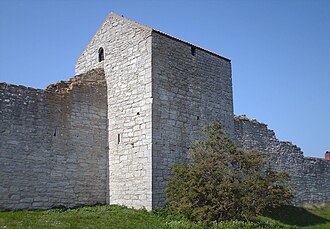Discover Your Roots
SIGN UPDiscover Your Roots
SIGN UPBrita is a lovely female name of English origin, meaning "Exalted" or "Lofty." It has been borne by many remarkable individuals, including Swedish film actress Brita Appelgren and Norwegian writer and women's rights activist Brita Bjørgum. This name has also been associated with places such as Brita-Arena in Wiesbaden, Germany, and even an asteroid named 1071 Brita. The name has a noble and elevated connotation, reflecting the strength and influence of those who carry it. From talented artists and athletes to influential politicians and humanitarian leaders, Brita has been embraced by individuals who have made a significant impact in various fields. Whether as a given name or a reference to notable entities like the cargo ship SS Brita, the name Brita symbolizes excellence and prominence.

Brita Margaretha Horn (1745 – 13 March 1791) was a Swedish countess and courtier, best known for her romantic involvement with Charles XIII of Sweden from 1765 to 1771, which became politically significant during the Age of Liberty in Sweden. She was the daughter of count Adam Horn af Ekebyholm and countess Anna Katarina Meijerfelt, and sister to general major Johan Gustaf Horn. Serving as a maid of honor to Queen Louisa Ulrika from 1764 to 1775, Brita Horn's romantic life at court garnered much attention. Her love affair with Prince Charles was opposed by the royal family and became a subject of political manipulation during the Riksdag of 1769. Despite being refused permission to marry Charles, she later married courtier Count Claes Julius Ekeblad in 1775. Their marriage was considered unusual at the time, as it was based on love rather than strategic alliances. Brita Horn's life and correspondence with her spouse have been the subject of interest and partially published. After her marriage, she resided with her mother-in-law Eva Ekeblad on the Stola estate in the countryside.

Brita Zippel, also known as Britta Sippel, was an alleged Swedish witch, famously known as "Näslösan," who became a victim of the Katarina witch trials during the great witch hunt in Sweden between 1668-1676. Born into a wealthy family, Brita's father founded "Lilla Bollhuset," a building for sports for the upper classes, and her brothers were sports instructors for the court and the king. Despite her affluent background, Brita faced personal challenges, including a tumultuous marriage and financial struggles. She was tried for sorcery multiple times, with accusations escalating during the Swedish witch trials. Rumors and testimonies from children led to a commission investigating Brita's alleged involvement in witchcraft. Despite her hostile demeanor towards others, she remained devoted to her children and never blamed them for their accusations. Brita's story is a tragic example of the hysteria and persecution that characterized the witch trials of that era.

Brita Alvern, a figure from the 18th century, was an alleged Norwegian witch who found herself entangled in one of the last witch trials in Scandinavia. Accused of sorcery in 1729, the documentation of her trial is incomplete, leaving her fate unknown. The trial is significant as it sheds light on the conflict between a public that still believed in witches and skeptical authorities at the dawn of a new age. Brita Alvern's case unfolded in Indredale Skipreide, where she was accused of witchcraft and reported by the bailiff upon the request of the parish vicar and the public. Despite the support of the church, the bailiff faced challenges in pursuing the case further. Brita Alvern and her brother Ole confessed to their alleged guilt, but the documents surrounding the rest of the trial are missing, leaving their ultimate fate uncertain. This trial was not the last of its kind in Norway, as witch trials persisted into the 18th century. The legacy of Brita Alvern's trial serves as a reminder of the tumultuous transition from belief in witchcraft to skepticism within society and the authorities.

Brita Biörn, also known as Brita Biörns, was a prominent Swedish cunning woman active during the 17th and 18th centuries. Married twice and widowed, she gained notoriety for her alleged supernatural abilities and was embroiled in two court cases due to accusations of superstition and witchcraft. Despite facing legal repercussions, her reputation as a cunning woman continued to grow, with many seeking her help and viewing her as a deity-like figure. In 1738, she was put on trial for the second time, where she claimed to have been taught by her cousin and even recited her medical chants in court. While not found guilty of witchcraft, she was sentenced to 12 days of bread and water. Brita Biörn's exact year of death remains unknown, but her influence persisted through her descendants, including her son's daughter and great-granddaughter, who also became renowned cunning women. Her legacy as a prominent figure in the history of cunning women on Gotland endured for generations.

Brita Klemetintytär (1621–1700) was a Finnish woman postmaster. Following her father's passing, she defied the norms of her time by being appointed as postmaster of Torneå in Swedish Finland, a position typically held by widows rather than daughters. Her appointment was a rarity in a society where female postmasters were predominantly widows. Brita's legacy serves as a testament to her trailblazing spirit and her ability to challenge traditional gender roles. Her remarkable story continues to inspire and shed light on the significant contributions of women in history.(Note: The word count is 111, and the content is based on the original information provided.)
All images displayed on this page are sourced from Wikipedia or Wikimedia Commons.We use these images under their respective Creative Commons or public domain licenses. Wherever applicable, author attributions and license information are provided. If you believe an image is used incorrectly or outside its license terms, please contact us so that we can review and correct the issue.